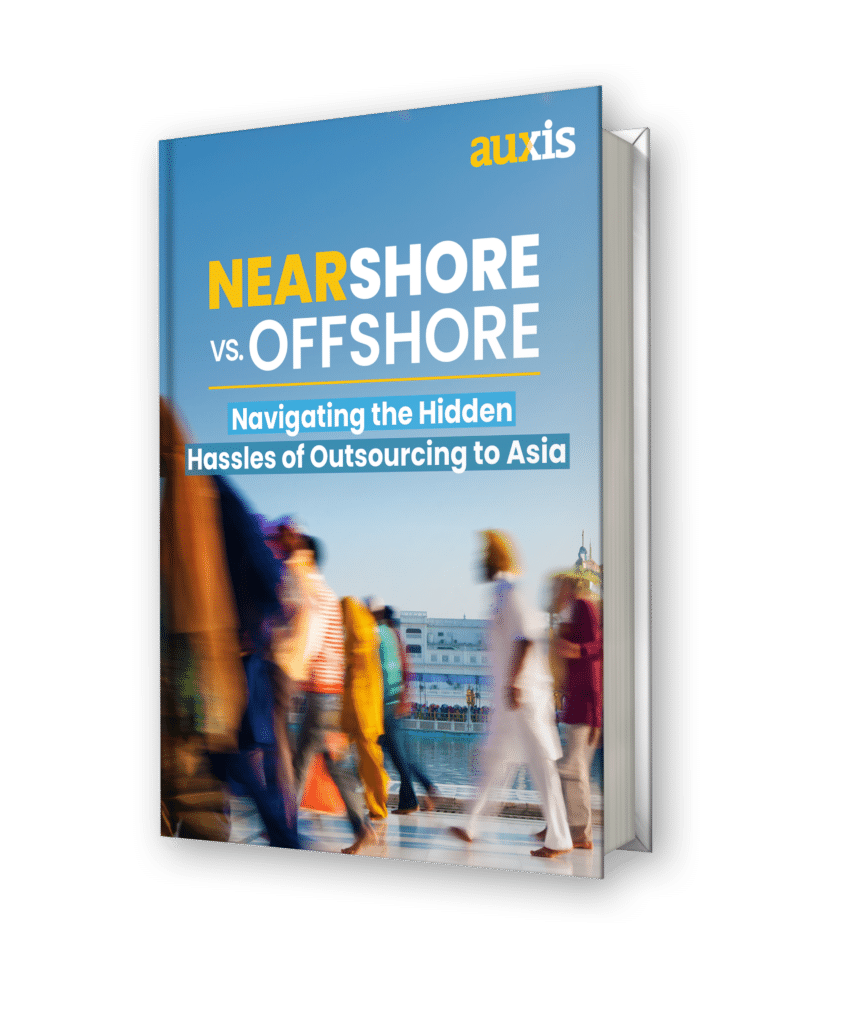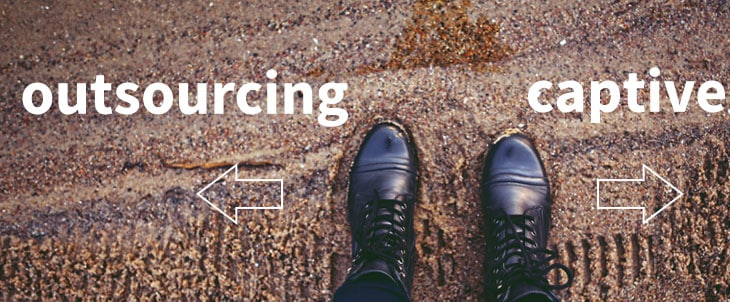Shared Services and Outsourcing models are no longer just for Global Fortune 500 companies. Today, we see an ever-increasing interest from middle-market organizations to reduce their back office costs and improve productivity and performance. More than ever, outsourcing is being viewed as one of the best ways to achieve these improvements, creating a new kind of shared services operation for these smaller organizations. If you are a larger organization and have still not considered shared services and/or outsourcing, you are late in the game.
When it comes to deciding whether you will run your shared services center in-house (captive) or through an outsourcing provider, there are multiple business factors to consider, and pros and cons of each model that you should be aware of.
How fast you need to achieve your savings targets is key
First, standing up a captive center involves a much higher level of investment in the first year, compared to an outsourcing model. If you are setting up your own center, the first question to be answered is “Where?”. Determining the proper location of a shared services center is a key step, and involves understanding both the financial factors of the local markets that you are considering, as well as regulatory (labor and tax laws, etc.) requirements. This is a process that takes time and requires significant analysis, and typically involves leveraging a third-party resource.
Once the location has been chosen, selecting and building out a facility must be accomplished. More time will be required to complete lease negotiations, and usually leasehold improvement costs and infrastructure costs require a significant up-front investment. In addition, you will need to build an organization from scratch, or almost from scratch, involving HR, recruiting, training, and other costs associated with the effort. All of these costs can be avoided if you choose to outsource, as the outsourcing provider should already have an established facility and infrastructure that you can “step into” and become operational in a relatively short period of time, with no capital investment required.
For this reason, the payback period of a captive model tends to be longer, and the speed to benefit is much lower. For example, we recently helped a client build the business case for both scenarios, captive and outsourcing, and the payback period of the captive scenario was more than double (>4 years) than the outsourcing scenario (~ 2 years).
If you need to have a positive cash impact within the first 2 years of the project, captive will most likely not work for you.
Nearshore vs. Offshore: Navigating the Hidden Hassles of Outsourcing to Asia

Facilities preparation can take a while
In case you decide to go captive, you need to know that your implementation timeline will probably be longer. Why? The preparation of the facilities usually take 4 to 8 months. In the best scenario, you have an existing office and enough extra space that you can leverage for your new shared services organization, but that’s not usually the case.
Your existing footprint will limit your choices
If you are a U.S.-based company with no operations outside the U.S, the only way to take advantage of the labor arbitrage from lower-cost markets in Latin America or Asia can only be through outsourcing. However, if reducing costs is not your main priority, and you are really looking to improve service and controls, and increase productivity and standardization, you could set up your captive center in the U.S., but you should understand that you are ultimately leaving money on the table, generally in the range of 30-50% of your labor costs.
For these reasons, many companies choose locations where they have an existing operation, a “Brownfield” location, where they can “piggy-back” on their existing infrastructure and reduce some of the time, effort and cost involved in starting up a new operation. If you are a multinational company with presence in different countries, let’s say, in Latin America, you might have an advantage that you could leverage for your captive center. Having an established legal entity, an existing organization, an HR department, the know-how of the country, etc., are tremendous advantages compared to standing up a “greenfield” center.
However, in many cases, multinationals do not have a large operation to leverage in the ideal countries for shared services. In this case, outsourcing can become a better alternative.
It’s not black and white. Most organizations use a hybrid model
In the end, you need to choose a model that works for your organization’s specific business and operational needs. The beauty of shared services is that you can combine different models to achieve your goals. For example, you may decide to start outsourcing your most transactional, lower risk activities such as AP, Cash Application and Reconciliations, and get significant savings in a short period of time, while simultaneously standing up a captive center for other activities that could also be centralized, but operated internally.
In our experience, what will usually dictate the best path is how aggressive your saving targets are, and the timeframe to achieve those savings.
If you would like to discuss your shared services strategy with us, or if you need help defining the best model for you, you can schedule a complimentary shared services consultation.


